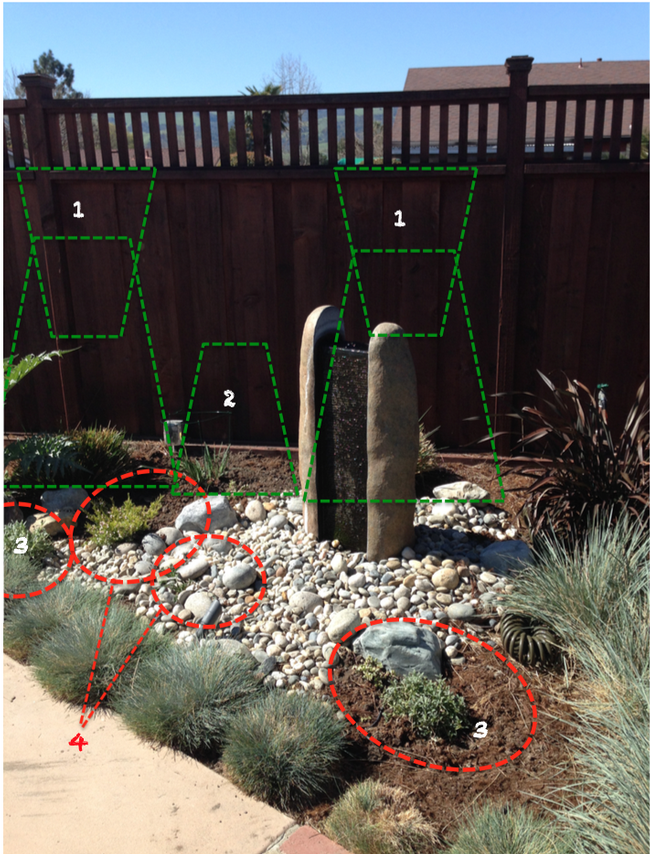A little Layering Will Do Just Fine, Thank You: Landscape Layering
As some of you might know, over the past 2+ years, I re-landscaped my entire yard – both front and back. It was a large project; tearing out sod and concrete, and putting in new irrigation, lighting, plantings, and hardscape. Last year, I filled in the basic landscape with edibles such as artichokes, lemons, strawberries and grapes. These additions are examples of horizontal layering — planting to give levels of color and interest. Now, I am planting out the area around my fountain to add vertical layers.
The Blue Fescue, Oat Grass, New Zealand Flax and Reed Grass were planted last year. This year, I've added larger rocks and small boulders to create some more texture, then added a few plants. Some of the plants will spread out and some of the plants will grow up. Although I want instant gratification, and everything pretty and full right now, that's not always the best way to plant (ugh, bummer). For this area, I restrained myself and put in just a few small-sized plants.
When planning/planting, it's important to think about the plant height and width at maturity, and how that will work within the space. No. 1. on the diagram to the left is the Feather Reed Grass planted last year. It has that nice shape like a fountain grass, but it's more compact and works well in narrow spaces. It will grow nice and high and full to fill in the space behind the fountain without overwhelming the area. The diagram shows the approximate height and width when the grass grows in for the season.
No. 2 on the diagram is a Day Lily. It's a nice filler for that area, provides a nice pop of color and it doesn't compete with the Reed Grass.
No. 3 on the diagram are ground covers and sedum. The ground cover is a simple summer snow. It works in full sun, is easily maintained and will produce a carpet of small white flowers. It will spread out but not up. The accompanying Sedum is a light variegated green with red rims, which will slowly spread out and provide a nice contrast against the white of the summer snow and the pale grey of the stones.
No. 4 on the diagram is a small evergreen shrub called Coleonema Pulchellum “Sunset Gold” that will grow up and out a little (2′ x 4′ at maturity). It has a nice yellow-green foliage that contrasts nicely against the silver hues in that area. It has small light pink-flowers that bloom in the spring and early summer. Also, tucked in the rocks are a couple of Gazania – just for kicks.
With the weather we experience in this area, these plants should grow/spread fairly quickly. Because none of these plants were particularly expensive, if I need to rearrange them, or take any out, there is very little financial pain.
Check back later in the summer to see how this area filled out.
In the meantime, do you have any layering you've done? Share it here. We'd love to see it.

